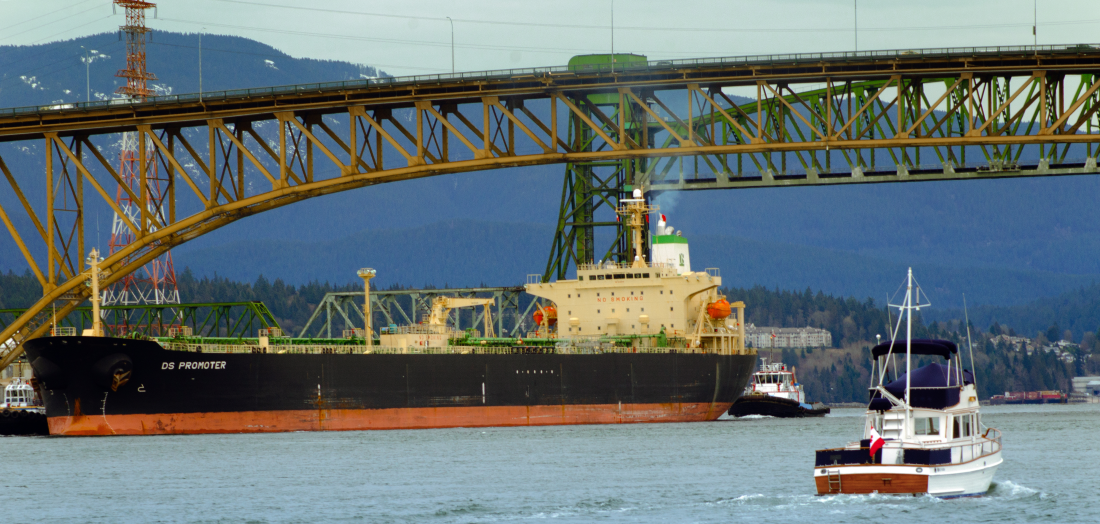1 in 3 Canadians reside in Western Canada, with most of the population concentrated in urban centers such as Greater Vancouver, Calgary, Edmonton, Regina, Saskatoon, and Winnipeg. Outside of these urban centres, the rest of the western region has relatively low population densities. This widely dispersed settlement pattern required building an extensive network of roads, railways and airports to connect people and resources to domestic and international markets.
Highways are the main means by which the region’s dispersed communities are connected. A network of mostly low-volume use highways is anchored by the Trans-Canada highway stretching east-west along the southern half of the region from Vancouver to Regina through Winnipeg and the Yellowhead Highway. In addition, there are 6 highways running east-west along a more northerly route between Winnipeg and Prince Rupert.
British Columbia is Canada’s gateway to the Asia-Pacific region and home to Canada’s largest port, fastest growing port, and second busiest airport. With the largest nexus of international trade infrastructure in Canada, the Lower Mainland of BC plays a strategic role in supporting Canada’s trade diversification objectives with key international markets. Ports in BC are central to enabling trade and handle over half of shipping volumes from all Canadian Port Authorities.
- The Port of Vancouver is Canada’s largest port in terms of traffic volume, handling 145.5 million tonnes (Mt) of traffic and facilitating over $240 billion in trade with over 170 economies in 2020. Home to 29 major terminals, the Port of Vancouver is equivalent to the same size as the next 5 largest Canadian ports combined and handles a diverse range of cargo, including: coal, crude oil, wood products, potash, grain, containers, breakbulk, automotive, and cruise.
- The Port of Prince Rupert, Canada’s other main West Coast port, handled 32.4Mt of traffic in 2020, 9% more than its volume in 2019. Prince Rupert offers the shortest ocean shipping route between China and North America, providing Canada with a competitive geographic advantage. The port and region are rapidly expanding, with several infrastructure and capital expansion projects underway.
West coast ports are also the main point of entry for manufactured goods imported from Asia in containers that are then shipped to inland destination in Canada and the US by railways and long-haul trucks. CN and CP are instrumental in facilitating the transportation of goods to and from marine gateways, including the movement of bulk commodities from Prairie provinces to BC ports.
Domestic marine activities also play an important role in British Columbia’s economy. Given that the area includes many inlets and islands, numerous coastal communities and ports rely on domestic tug and barge operations. In addition, marine carriers are active in transborder bulk trade to the states of Alaska, Oregon and Washington. Freight carried along the West coast includes general cargo for community resupply, wood products, gravel and stones, construction materials and coal.
International airports in each major city provide cargo services to domestic and international markets.
In 2020, Vancouver International Airport handled 230 thousand tonnes of cargo traffic, which made up 19% of Canada’s air freight traffic.
In 2020, $113 billion worth of goods were exported from Western Canada for all modes (excluding pipelines), with 52% destined to the US, 36% to Asia and 2% to Mexico.
With respect to passenger travel, Western Canada is home to 3 of Canada’s top 5 busiest airports. In 2020:
- Vancouver International Airport handled 7.1 million passengers
- Calgary International Airport handled 5.3 million passengers, and
- Edmonton International Airport handled 2.4 million passengers
Vancouver International Airport and Calgary International Airport serve as regional hub airports for both Air Canada and WestJet, Canada’s 2 biggest airlines.
Passenger rail services provided by Crown-owned VIA Rail in Western Canada are long distance intercity passenger services. VIA Rail also operates a long-haul passenger route between Toronto and Vancouver, stopping at major cities such as Edmonton, Saskatoon and Winnipeg along the way. This route carried 6 thousand passengers in 2020. Other routes operated by VIA Rail in the western region include Jasper to Prince Rupert and Winnipeg to Churchill.
In British Columbia, BC Ferries provide passenger and vehicle ferry services for coastal and island communities in the province, as well as access to Victoria, where the provincial legislatively assembly is located. In 2020, the operator carried 6.7 million vehicles and 13 million passengers on various routes.
